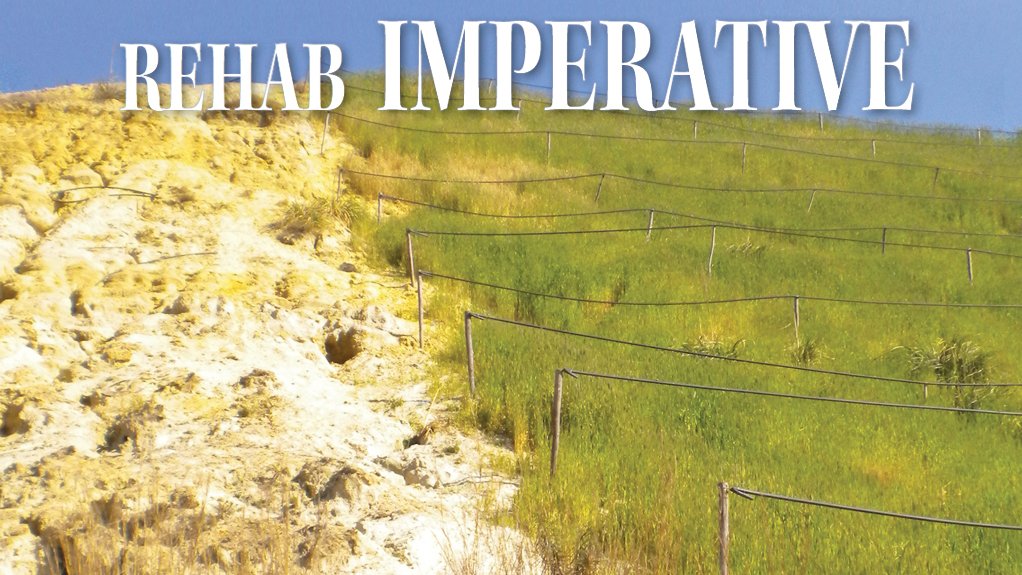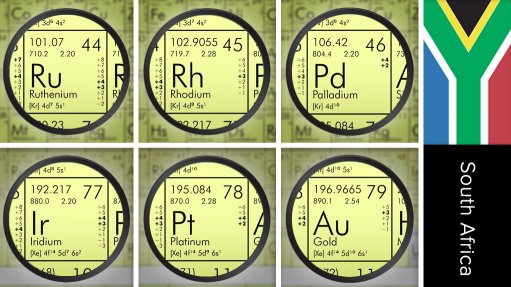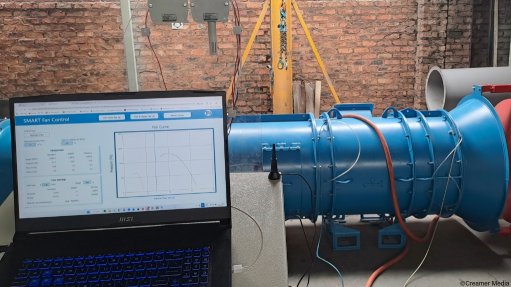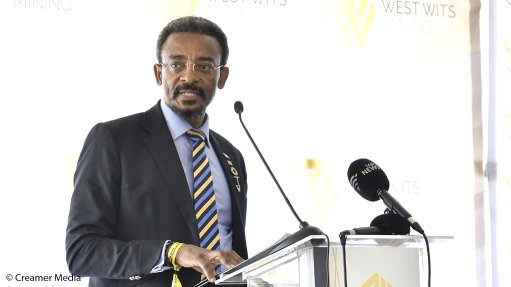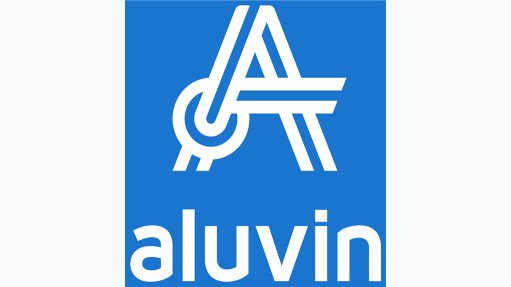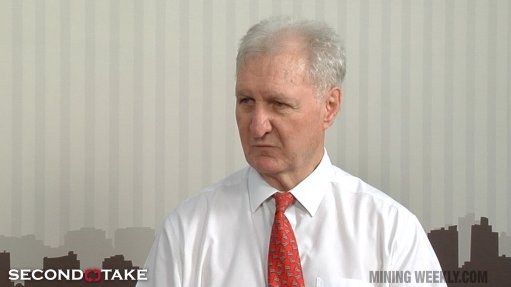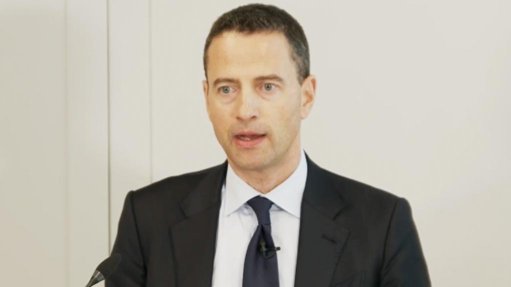Monitoring, assessing of land reclamation methods gaining momentum in SA
The mining industry contributes significantly to South Africa’s economic development and job creation. It also remains an infinite source of growth for the country, which means that postmining landscapes that are socially inclusive, self-sustaining and financially viable need to be established.
This can be achieved through the successful rehabilitation of mined-out land that has a definite end land use, as it promotes the mitigation of the potential environmental, health and safety impacts of mining. Land rehabilitation also offers an alternative income-generating scenario, creating jobs and simultaneously alleviating social inequality.
Land rehabilitation network specialist Raina Hattingh, who works through the University of Pretoria’s Business Enterprises, tells Mining Weekly that planning for mine closure requires the establishment of a piece of land that can serve the needs of the land’s flora and fauna as well as the people who will depend on the land in the future.
Hattingh adds that, if the requirements and needs of postmining communities are not considered as part of a mine’s rehabilitation planning, it is unlikely that a sustainable alternative use for that land will ever be successfully achieved.
She says that a key outcome of successful closure is the ability of a mining company or rehabilitation specialist to “walk away” from a rehabilitated area “as is”, and any misalignment or unexpected occurrence is planned in post- closure land use – regardless of its being part of a constructive engagement process – could notably impact on the time and financial input required to create a defined suite of land uses.
In the mining industry, this requires integrating the objectives of a mining company’s social and labour plans – which consider the needs of internal employees and external communities and regulators with the objectives of the mine’s physical production and closure planning. This offers an opportunity to align and channel operational expenditure towards a common postclosure land state, explains Hattingh.
Similarly, in July, Mining Weekly quoted newly appointed Council for Scientific and Industrial Research (CSIR) executive director of natural resources and the environment May Hermanus as saying that a holistic regional economic hub needed to replace the current site-by-site approach to mine rehabilitation and that a far more productive postmining landscape needed to be implemented.
She stressed that industry stakeholders needed to interface much more effectively in efforts to build the economy.
Hermanus, the former director and adjunct professor at the Centre for Sustainability in Mining and Industry at the University of the Witwatersrand, added that there was a need to formulate policy-frameworked and economy- boosting regeneration measures when closing old mines to provide scope for optimum development when opening new ones.
“Perhaps this is a real opportunity to show how this science is fundamental to decision-making and what it can offer when we think about the future that lies within the carrying capacity of our natural resources,” Hermanus said.
A Formal Agenda
To achieve successful mine land rehabilitation, nonprofit organisation the Land Rehabilitation Society of Southern Africa (LaRSSA) immediate past president Fanus van Wyk stresses the importance of a society such as LaRSSA, as it is driving the development of formalised norms and standards that aim to provide a platform for land rehabilitation research and knowledge- sharing, which subsequently drive the land rehabilitation agenda in South Africa.
Van Wyk believes that successful land rehabilitation not only influences decision-makers to think differently about how land management is undertaken but also encourages stakeholders to think similarly to achieve the same goal.
To do this, mining industry stakeholders need to understand the land rehabilitation landscape properly and accept the associated challenges. These include a lack of capacity and experience to enforce land management legislation in South Africa, which requires an alternative ethic; the staggering rate at which land is deteriorating and the need to sustain it in the medium term; the need to undertake rehabilitation and management as cost effectively as possible; and the need to understand financial jargon, legal alignment, incentives, opportunities and available technology.
Van Wyk believes that once these challenges are understood and accepted, a suitable land rehabilitation model that has the best impact value can be put in place to ensure the establishment of a successful rehabilitation and management plan going forward. This will ensure that the current land-management culture, which takes natural resources for granted, is changed.
Stakeholder Involvement
Despite the current challenges and the lack of clear legislation with regard to land rehabilitation, LaRSSA has amassed buy-in from a large number of regulators and affected mining companies, which has prompted local mining companies to do their utmost to comply with South Africa’s land rehabilitation guidelines and to add new systems to their operations to help them comply, notes Van Wyk.
He also points out that LaRSSA has investigated sustainable land management and rehabilitation issues, with more than 3 000 research papers being published each year on these topics. “Although we do not have site-specific answers, we do have a foundation from which to make and act on informed decisions in terms of developing a consolidated, practical end-land-use vision, area by area.”
However, Van Wyk adds that, going forward, the gap between practical and theoretical implementation of best practice guidelines needs to be narrowed.
Van Wyk believes this can be accomplished through centralising the administration of information output; establishing a clear regulatory policy on land rehabilitation; reducing the confusion regarding mine rehabilitation terminology; combining local and international resources and publicising knowledge; and declaring land rehabilitation a legitimate engineering discipline.
Success Barometer
Van Wyk maintains that effective land rehabilitation also requires improved communication, peer support and the implementation of an effectiveness barometer to measure the successes and failures of certain rehabilitation and management efforts.
Rhodes University Department of Botany professor emeritus Roy Lubke agrees, adding that a barometer is imperative when it comes to measuring the success of an implemented land rehabilitation and management plan.
He believes that a successful rehabilitation project must, firstly, assess the natural environment to determine how it has changed and the type of environment it needs to be re-established and, secondly, draft a framework or stepwise method to achieve the goals of the rehabilitation project.
He adds that, thereafter, one must determine how the success of the project can be measured regarding, for example, vegetation establishment, besides other aspects. The project must then be carried out, with periodical testing to monitor whether the goals are being achieved.
Lubke says this process is very often not followed in practice and that ad hoc methods do not always result in satisfactory outcomes.
Hattingh supports this idea, adding that monitoring and assessing land rehabilitation are important, as successful rehabilitation depends on attaining a set of predefined performance criteria aligned with a specific post- disturbance land use.
“A comprehensive monitoring programme should be devised as soon as the implementation of any rehabilitation takes place, whereby the programme aims to use the period of implementation as the base data for assessments going forward.
“Monitoring methods should be based on scientifically sound principles that can be easily replicated over time and that can be optimally integrated into operationwide environmental management systems, she explains.
University of Pretoria Department of Plant Production and Soil Science senior lecturer Dr Wayne Truter, who is a founding member and was the first president of LaRSSA, also believes in the importance of scientific monitoring and emphasises the need to assess the outcome of a rehabilitation plan.
He says the strategies currently used to successfully reclaim and rehabilitate mined-out land are primarily based on engineering principles, with a few associated agricultural and natural scientific principles. These principles are determined by the methods used to collect and interpret the monitoring and assessment data.
“Correct monitoring of rehabili- tated land provides the opportunity to determine to what extent the implemented reclamation strategies have made any difference. From this information, adaptive management plans can further be planned and implemented. For informed adaptive management decisions to be made, it is imperative that monitoring data is trusted,” says Truter.
By applying the correct principles and understanding the interrelationships between soil, vegetation, climate and animals, more effective ways of dealing with the challenges associated with successful land reclamation are made possible.
Modelling Tools
Hattingh says holistic land rehabilitation requires an in-depth understanding of a plethora of scientific disciplines. She explains that there are assessment tools and techniques for each one of these disciplines that aim to set performance requirements, assess the implemented long-term performance and apply corrective action if required.
However, she adds that, while many of these tools can be applied only to a specific focus area, other tools rely on the assessor’s experience or professional opinion.
Further, though there are limited tools available that enable the integration of various biophysical input parameters, some international work is being undertaken to develop tools with a broader range of inputs, such as Natural Capital Project’s InVEST toolbox – a suite of software models used to map and value the goods and services from nature that sustain and fulfil human life, says Hattingh.
LaRSSA president Piet Smit points out that these modelling tools are becoming increasingly relevant and accurate, and might even assist in predicting liabilities that are currently difficult to quantify.
Hattingh adds that the need for dedicated postmining rehabilitation designs, compiled as part of the upfront planning of a mine, is not only gaining momentum in South Africa but is largely considered as a premining requirement in large parts of the US and Australia.
The benefit of undertaking such modelling is the financial gain of optimising materials movement during operations. This movement is enhanced when waste material is replaced in such a way that potential long-term contamination is minimised, thereby further reducing possible latent risks to the rehabilitated environment.
It is clear from this that the rehabilitation of postmining landscapes is becoming a social and scientific imperative for sustaining economic growth and ensuring a bright future for generations to come.
Article Enquiry
Email Article
Save Article
Feedback
To advertise email advertising@creamermedia.co.za or click here
Press Office
Announcements
What's On
Subscribe to improve your user experience...
Option 1 (equivalent of R125 a month):
Receive a weekly copy of Creamer Media's Engineering News & Mining Weekly magazine
(print copy for those in South Africa and e-magazine for those outside of South Africa)
Receive daily email newsletters
Access to full search results
Access archive of magazine back copies
Access to Projects in Progress
Access to ONE Research Report of your choice in PDF format
Option 2 (equivalent of R375 a month):
All benefits from Option 1
PLUS
Access to Creamer Media's Research Channel Africa for ALL Research Reports, in PDF format, on various industrial and mining sectors
including Electricity; Water; Energy Transition; Hydrogen; Roads, Rail and Ports; Coal; Gold; Platinum; Battery Metals; etc.
Already a subscriber?
Forgotten your password?
Receive weekly copy of Creamer Media's Engineering News & Mining Weekly magazine (print copy for those in South Africa and e-magazine for those outside of South Africa)
➕
Recieve daily email newsletters
➕
Access to full search results
➕
Access archive of magazine back copies
➕
Access to Projects in Progress
➕
Access to ONE Research Report of your choice in PDF format
RESEARCH CHANNEL AFRICA
R4500 (equivalent of R375 a month)
SUBSCRIBEAll benefits from Option 1
➕
Access to Creamer Media's Research Channel Africa for ALL Research Reports on various industrial and mining sectors, in PDF format, including on:
Electricity
➕
Water
➕
Energy Transition
➕
Hydrogen
➕
Roads, Rail and Ports
➕
Coal
➕
Gold
➕
Platinum
➕
Battery Metals
➕
etc.
Receive all benefits from Option 1 or Option 2 delivered to numerous people at your company
➕
Multiple User names and Passwords for simultaneous log-ins
➕
Intranet integration access to all in your organisation



